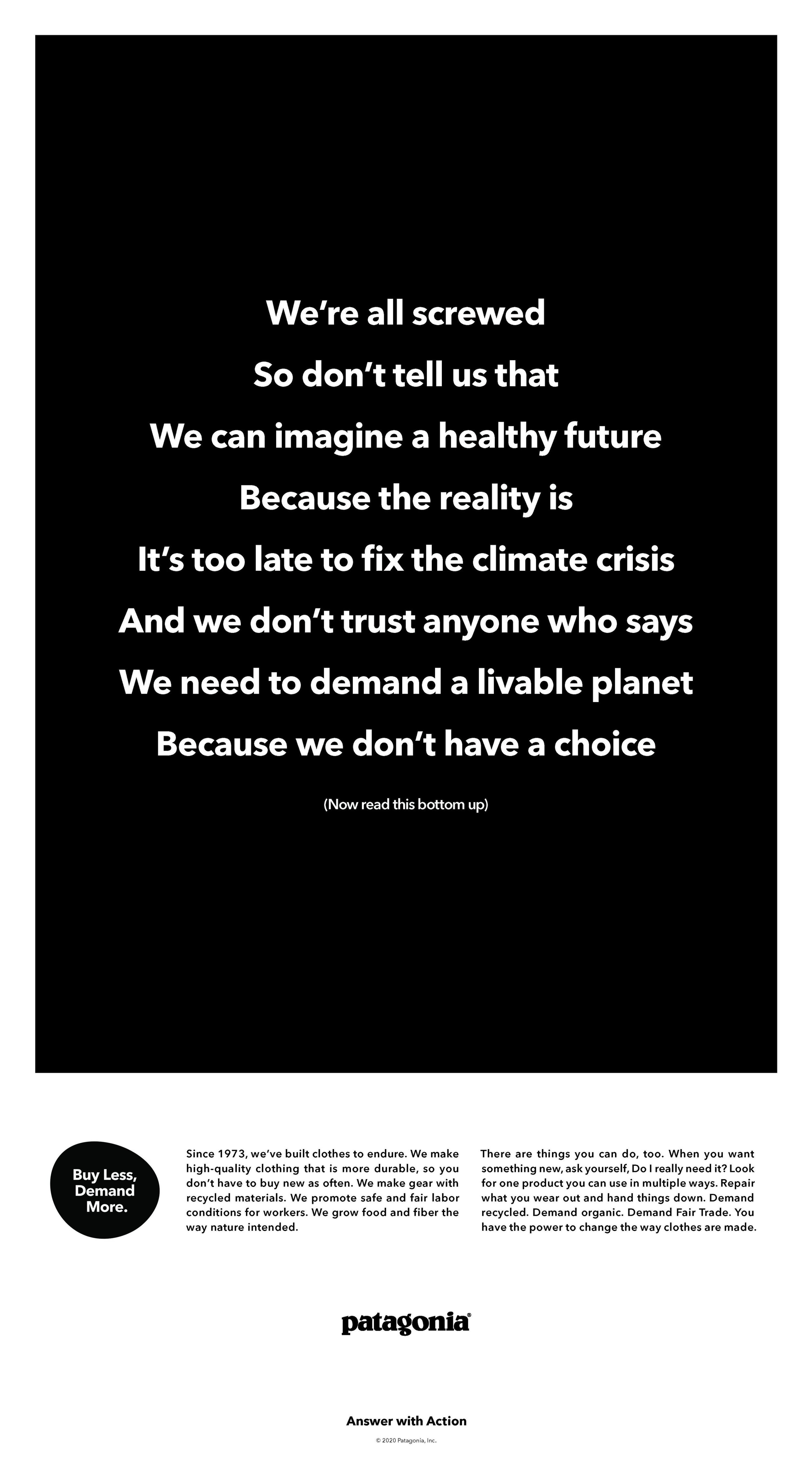Case Study: Patagonia Clothing Company
Location: USA
Investment Type: Internal business, venture, philanthropic
Patagonia has forged a different approach to storytelling, one that positions customers less as consumers, and more as allies and activists. Known as an 'activist brand', the clothing company, founded in 1973, has evolved into one of the world’s biggest and best-known names in outdoor wear, with more than 50 stores around the world. From its inception, the company has used marketing to engage people with a range of environmental issues and evolved a range of storytelling methodologies that cut through.
Patagonia's mission is pretty bold — ‘We're in business to save planet earth’. The company uses its marketing platforms to communicate how it is working towards this mission, making things personal by inviting customers to learn how and where the product they are purchasing is made and its social and environmental footprint. This is pretty standard for an ethical company today. Where the storytelling of Patagonia steps it up a notch is around the how and what of their storytelling.
Brand storytelling as a form of 'maverick activism'
Patagonia uses their storytelling platforms for bold and provocative messaging that invites customers to challenge the status quo. With its now famous ' Buy Less, Demand More' anti-Black Friday campaign, the company doesn't go on sale for Black Friday or Cyber Monday and instead powers down on provocative storytelling across its platforms to deliver some hard-hitting home truths about the impact of mass consumption on planet earth.
The brand is also working to connect its messaging with tangible actions customers can take. With its Worn Wear campaign, Patagonia developed a purpose-built biodiesel truck, fitted out with two sewing machines. The truck did a 21-city tour across the USA, giving away free clothing to college and school students - the catch being every item had something wrong with it, and before the recipients could take it they had to repair the fault with assistance from the Patagonia team.
The company recently developed Action Works - a platform to connect their wide network of grassroots environmental organisations with Patagonia customers looking for ways to help out with issues that concern them. It’s now possible for anyone to discover and connect with environmental action groups and get involved with the work they do.
It's worth thinking about how funders and investors can enable more of this kind of storytelling across the food and fibre industry. This could look like:
- If you're investing in companies and brands, explore ways that investment can enable impactful storytelling, i.e. having a dedicated pool of capital for creating stories of depth focused not on selling more products but on building narratives and awareness for meaningful change.
- Funding/convening a network of on-the-ground practitioners and organisations, and high-level creatives to explore collaborations and storytelling options and then providing the support to bring those ideas to life and get them out into the world.
“Big NGOs have disappointed people, government has disappointed people, business and corporations have disappointed people...
People are hungry for credible stories and we take that leadership role very seriously.”
— Joy Howard Vice President of Global Marketing in 2014 | Interview with J. Beer
https://www.patagonia.com.au/pages/ownership
This case study is an extract from Regenerating Investment in Food and Farming: A Roadmap.
